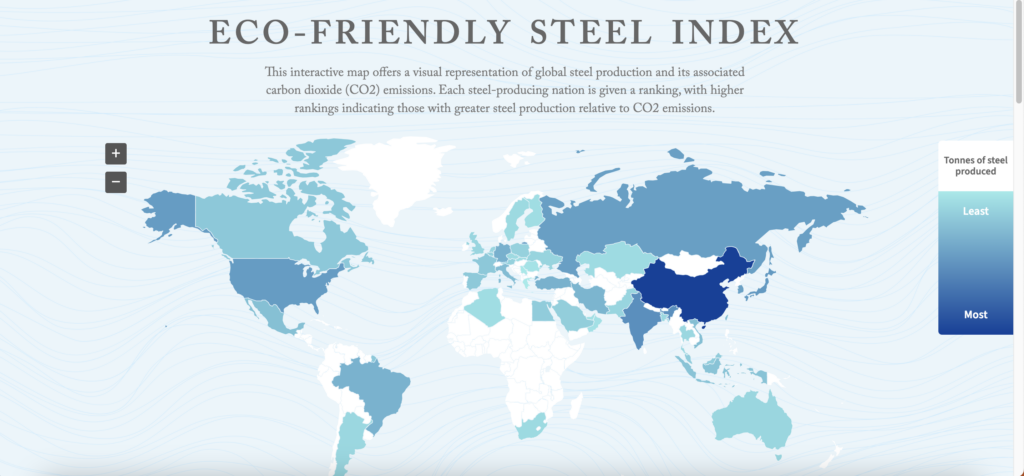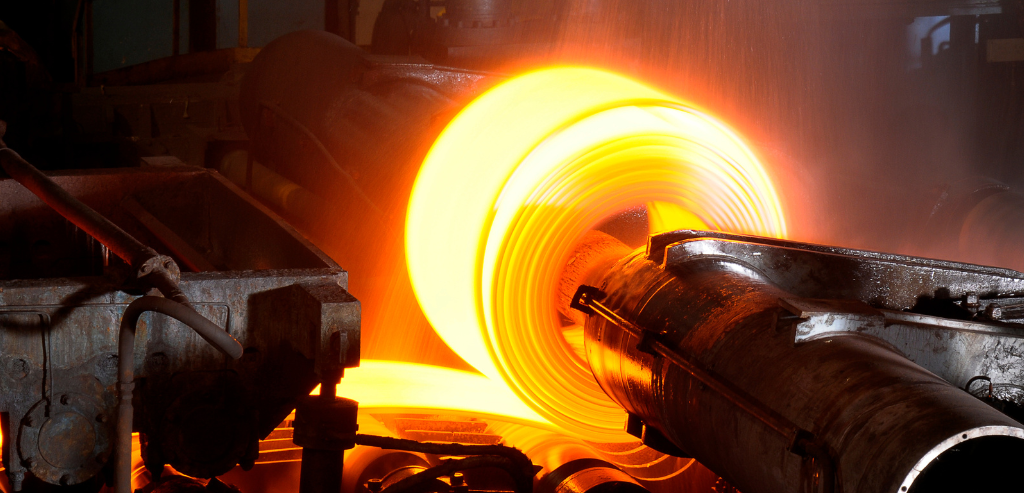Steel manufacturing is a crucial industry that has a critical impact on the economies of countries across the globe.
According to statistics from worldsteel.org, the steel industry facilitates up to 49.3 million jobs in various sectors all over the world, making the sector an absolutely vital lifeline for international economic stability.
Over the years steel production has advanced considerably, but not without cost to both the environment with increased carbon emissions. In this piece, we’ll cover a little about the history of steel production, its impact on the global economy, what we can do to measure the subsequent environmental impact and how we can all make a positive change.
How is Steel Made?
Modern steel production began in the 1850s using a process known as the Bessemer process, and is generally considered to be the first capable of producing steel on mass. In fact, this method was reportedly developed by two inventors independently of each other at the same time; one here in the UK and another in Pittsburgh USA.
Both methods involved removing the impurities in iron using an air blast furnace.
Due to this advancement in steel manufacturing, other steel production businesses started to perfect the overall production. In doing so, the air blast technology was used to begin preserving the carbon content to eliminate almost all impurity in the finished product.
This was then evolved to the point we’re at today, where steel is mass-produced to the highest quality.
Modern steel manufacturing is achieved by using one of two methods, which are:
Blast furnace – The blast furnace process combines raw iron ore with a small quantity of scrap steel. Oxygen is then blown into the furnace to raise the temperature.
This increase in temperature melts the scrap into liquid, allowing the iron impurities to oxidise and evaporate.
Electric arc furnace – This method uses high-current electricity arcs from electrodes to melt large amounts of steel scrap into liquid form.
While this scrap melts, other alloys are added to the mixture, such as chromium and nickel, until the metal reaches the intended steel to alloy ratio to form stainless steel.
For purification, the furnace blasts oxygen, lime and fluorspar which combines with the impurities from the steel to create slag. The slag then floats to the top of the molten mixture and is removed, leaving behind only pure steel.
The Environmental Impact of Steel Production
As you can imagine, the world produces a lot of steel. In 2018 alone, statistics show that 240 kilos of steel was produced for every one person in the world, and is expected to grow further still in 2024.
Because steel is so versatile, comparatively easy to manufacture and simple to bend and manipulate into different shapes and sizes, it’s something we simply cannot do without in modern manufacturing.
However, on the other hand, steel production is one of the most energy intensive industries in the world and the resulting carbon emissions are considerable. Steel requires around 20 gigajoules of energy per ton to produce, and three quarters of this energy comes from burning coal.
Steel production needs significant inputs of a coal-like material, this is called coke, and is extremely damaging to the environment. Not only are the fumes from the process incredibly toxic, but the resulting wastewater also contains known carcinogenic compounds.
On average, over 1.8 tonnes of CO2 is emitted for every tonne of steel produced, adding over 3.3 million tonnes of carbon dioxide to annual global emissions.
How Can We Limit the Potential Impact of Steel Production?
Delivering significant reductions in steel production emissions to ensure carbon neutrality, while still increasing steel production year on year, means that radical technologies and production methods must be adopted across the industry.
Of course, this needs to balance the commercial requirements with the different evolutions in the technology, but many big hitters in the industry are committing to significant emissions reductions on the way towards complete neutrality by 2050.
For example:
The state-owned steel group China Baowu Group, has recently committed to reducing peak carbon emissions in 2023 by 30% by 2025.
India’s TATA Group, is planning to achieve CO2 intensity of less than 2 tonnes per tonne of crude steel by 2025 and less than 1.8 by 2030.
Steel Dynamics in the USA have committed to a 25% emission reduction by 2025 and a 30% reduction by 2030.
In the past five decades or so, advances in technology, production quality and the gradual move from traditional blast furnaces to electric arc furnaces have reduced emissions by up to 60%. This move towards cleaner and more efficient production from these furnaces will continue to drive down emissions, and help to create a roadmap for a sustainable future.
The emergence of green steel, which is expected to grow as a sector to a worth of more $380bn by the year 2031, is also paving the way for innovation.
Sustainable steel refers to the process of producing steel using an energy and environmentally-friendly process, that serves to minimise the production of CO2. More traditional steel production, as we covered earlier on, such as blast furnaces are carbon-intensive and contribute significantly to greenhouse gas emissions and toxic fumes.
Emission-free steel can be produced in two ways:
Made using iron ore, but utilises hydrogen as an energy vector rather than the costly blast furnace.
With recycled steel using an electric arc furnace.
Eco-steel is likely to become a serious game changer, particularly for those countries that produce the most steel.
Which Country Produces the Most Steel?

The main steel producing countries in the world, as per our interactive Eco-Friendly Steel Index, are:
China – 101.8bn tonnes per year.
India – 12.53bn tonnes per year.
Japan – 8.92bn tonnes per year.
USA – 8.05bn tonnes per year.
Russia – 7.15bn tonnes per year
South Korea – 6.58bn tonnes per year.
These six countries alone produce over three quarters of the world’s steel.
As you explore the map, you’ll observe that each country is represented by a distinct colour and rank. These indicators align with the country’s steel production levels—the darker the colour and the higher the rank, the greater the production – vs the emissions they produce from this production each.
What Can We Do as a Business?
For our part at Steel Landscaping Co, we’re committed to working with steel production partners that initially signed up to the Science Based Targets Initiative (SBTi) “Business Ambition for 1.5°”, or those committed to net-zero with the Corporate Net-Zero Standard.
These commitments provide the guidance and tools required for businesses to set new science-backed net-zero targets, which is a very important metric to understand in the steel production industry.
We understand that by utilising the resources used to make steel, it’s crucial that we carefully select partners that are committed to sustainability and the reduction of greenhouse gas emissions.
As a business, we ensure that all of the products that we produce are designed to last a lifetime. Not only does this reduce the reliance on plastic products, but also means that all of our customers can rely on us to produce outdoor products that stand the test of time and look fantastic in the process too.
To find out more about our commitment to our customers, our suppliers and our product range, why not get in touch with us today.

